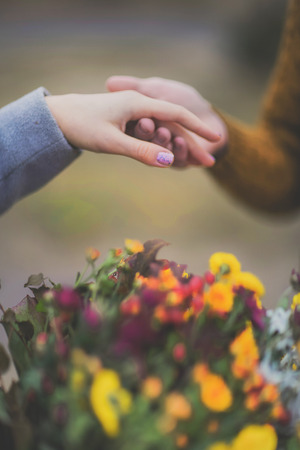Understanding Feng Shui and its Global Appeal
Feng Shui, an ancient Chinese practice rooted in Taoist philosophy, centres on harmonising individuals with their surrounding environment. Its fundamental premise is that the arrangement of space influences the flow of energy—known as “qi”—and therefore impacts various aspects of life, including relationships and emotional wellbeing. The core tenets involve strategic placement of objects, use of specific symbols, and attention to natural elements, all aimed at promoting balance and positive energy.
While originally embedded within Eastern traditions, Feng Shui has experienced a notable global expansion, particularly over the past few decades. Western audiences have been drawn to its rational structure and practical outcomes, finding resonance in its promise of improved personal spaces and enhanced emotional states. In the United Kingdom, Feng Shui’s appeal is often connected to a broader interest in holistic wellbeing and interior aesthetics. British practitioners typically approach Feng Shui with a blend of curiosity and pragmatism—valuing both its philosophical depth and its tangible benefits for modern living. This cross-cultural adaptation often involves integrating iconic love-attracting symbols into home décor in ways that suit British tastes while respecting the tradition’s underlying principles.
2. The Iconic Symbols of Love in Feng Shui
Feng Shui, an ancient Chinese practice centred on harmonising individuals with their environment, employs a variety of symbols believed to attract love and romance. Understanding these symbols requires not only an appreciation of their visual forms but also a grasp of their historical roots and deeper meanings. Below is an analytical breakdown of the most iconic Feng Shui love symbols, their traditional representations, and what they signify within both Eastern contexts and how they might be interpreted or integrated within a British cultural framework.
The Key Symbols: Origins and Meanings
| Symbol | Traditional Form | Historical Roots | Core Meaning |
|---|---|---|---|
| Mandarin Ducks | A pair of carved or painted ducks, often depicted together | Originates from Chinese folklore where mandarin ducks symbolise lifelong partnership due to their monogamous nature | Romantic fidelity, enduring love, harmonious relationships |
| Double Happiness Symbol (囍) | A stylised red character formed by doubling the Chinese word for happiness | Prominently featured in Chinese wedding decorations since the Tang Dynasty | Marital bliss, joyful unions, auspicious beginnings for couples |
| Peony Flowers | Lush, blooming peonies depicted in art or real flowers arranged at home | Revered in imperial China as the “king of flowers” and associated with feminine beauty and grace | Attraction, romance, prosperity in relationships |
| Knot of Eternity (Mystic Knot) | An intricate knot with no beginning or end, often made with red cord | An ancient symbol used throughout Asia to represent endlessness and continuity | Eternal love, unbreakable bonds, longevity in partnerships |
| Rose Quartz Crystals | Pale pink stones placed in pairs or clusters within the home | Historically valued across various cultures for their associations with emotional healing and affection | Nurturing love energy, emotional balance, opening the heart to new relationships |
Cultural Adaptation: Integrating Symbols in British Homes
While these symbols have deep roots in Chinese tradition, many British practitioners interpret them through a lens that values both symbolism and aesthetics. For example, displaying a pair of mandarin duck ornaments on a mantelpiece or incorporating peony motifs into soft furnishings allows homeowners to reference the original intent—inviting harmonious relationships—while maintaining cohesion with British interior styles. Similarly, rose quartz crystals may be subtly integrated into decorative bowls or as part of a modern centrepiece. This culturally adaptive approach demonstrates how the essence of Feng Shui can transcend its origins while still honouring its core meanings.
![]()
3. Cultural Significance: East Meets West
When considering iconic Feng Shui symbols for attracting love, it is essential to explore the cultural dynamics that shape their meanings and uses. In their Eastern origins, particularly within traditional Chinese contexts, symbols such as Mandarin ducks, double happiness characters, and rose quartz crystals are deeply embedded in centuries-old philosophies about harmony, balance, and destiny. These objects are not merely decorative; they carry stories, rituals, and an inherited wisdom that inform their placement and significance in daily life. For example, placing a pair of Mandarin ducks in the southwest corner of a home is thought to enhance marital harmony based on the principles of the Bagua map.
However, as these symbols migrate westward and are adopted within British culture, their interpretations inevitably shift. The UK’s multicultural environment encourages reinterpretation: rather than adhering strictly to traditional rules, British practitioners often blend Feng Shui with local sensibilities and aesthetics. While some may still honour the original symbolism—using rose quartz for self-love or gifting Mandarin duck figurines to newlyweds—others may prioritise the visual appeal or personal resonance of these items over strict adherence to Eastern placement guidelines.
This East-meets-West fusion also reflects broader British attitudes towards wellbeing and interior design. Rather than seeing Feng Shui objects as prescriptive or mystical, many Britons approach them with curiosity and openness, integrating them into homes alongside elements from other global traditions. The result is a more individualised practice: one that respects the symbolic roots of Feng Shui while adapting its application to suit contemporary British lifestyles and values. This comparative lens highlights both the adaptability of these ancient symbols and the evolving ways they contribute to the pursuit of love and harmony in a modern British context.
4. British Adaptations and Everyday Applications
While Feng Shui originated in ancient China, its symbols for attracting love have found a unique resonance within British homes and relationships. Rather than adopting these practices wholesale, many in the UK blend them with local customs, aesthetics, and practicalities. This integration is often subtle, reflecting both a respect for tradition and an appreciation for modern British sensibilities.
Adapting Symbols to the British Home
British interiors are typically characterised by a balance of comfort, function, and understated elegance. When it comes to Feng Shui symbols such as mandarin ducks, rose quartz hearts, or paired candles, their placement and presentation are thoughtfully tailored:
| Feng Shui Symbol | Typical Placement | British Adaptation |
|---|---|---|
| Mandarin Ducks | Bedroom (bedside table or window ledge) | Often incorporated as tasteful ornaments or subtle art pieces that match existing décor |
| Rose Quartz Heart | Living room or shared spaces | Displayed alongside other crystals or as part of a decorative tray arrangement with flowers and candles |
| Paired Candles | Dining table or mantlepiece | Selected in classic British scents (such as lavender or rose) to evoke romance while blending seamlessly into traditional settings |
Incorporating Symbols into Relationships
The British approach to Feng Shui in relationships is pragmatic. Couples may exchange symbolic gifts—like a pair of mandarin duck figurines on an anniversary—or place rose quartz under their pillows as a discreet gesture towards strengthening romantic bonds. Open discussion about these practices varies: some embrace them openly for their aesthetic and symbolic value, while others prefer a more private acknowledgment.
Local Insights and Tips
- Sensitivity to Space: Given the average size of British homes, especially in urban areas, symbols are chosen for compactness and versatility.
- Aesthetic Harmony: Items are selected to complement popular styles such as minimalist Scandinavian or cosy cottagecore trends prevalent in the UK.
- Cultural Blending: It’s common to see Feng Shui symbols mixed with British traditions—such as placing paired candles next to family photographs—to create a sense of both heritage and harmony.
- Sustainable Choices: Many opt for ethically sourced crystals or locally crafted ornaments to align with eco-conscious values increasingly important in British society.
Summary Table: Typical Usage Patterns in Britain
| Usage Context | Description |
|---|---|
| Gifting Between Partners | Presents like rose quartz jewellery or symbolic ornaments exchanged during anniversaries or special occasions |
| Home Décor Integration | Selecting items that blend with interior design themes rather than standing out as exotic elements |
| Personal Rituals | Placing objects in specific locations based on both Feng Shui guidance and personal meaning (e.g., near the bed or favourite reading nook) |
| Mental Wellbeing Practices | Using symbols alongside mindfulness routines or meditation spaces for emotional balance and relationship harmony |
This considered adaptation highlights how iconic Feng Shui symbols are not merely imported but thoughtfully woven into the tapestry of contemporary British life—supporting love and connection through both tradition and modern practicality.
5. Critical Perspectives and Modern British Attitudes
In contemporary British society, Feng Shui—especially its iconic symbols for attracting love—often sits at the intersection of curiosity, scepticism, and cultural adaptation. While some embrace these practices as part of a wider interest in wellness and Eastern philosophies, others approach them with characteristic British rationalism and a healthy dose of scepticism.
British Rationalism and Sceptical Inquiry
The UK has a long-standing tradition of empirical thinking and scientific enquiry. This heritage means that claims regarding Feng Shui’s efficacy are frequently met with critical questions: Are there proven benefits? Is it merely superstition or psychological suggestion? Many Britons seek evidence before fully accepting the power of Mandarin ducks, double happiness symbols, or rose quartz crystals to influence romantic outcomes. As such, discussions about Feng Shui in the UK often focus on separating decorative enjoyment from unproven mystical claims.
Cultural Curiosity and Openness to Alternatives
Despite this rational outlook, British society is increasingly multicultural and open to alternative lifestyles and beliefs. Interest in holistic wellbeing, mindfulness, and non-Western traditions has risen in recent years. For some Britons, incorporating Feng Shui symbols into their homes is less about strict adherence to tradition and more about experimenting with new ways to create positive environments and attract desired energies—including love.
Balancing Tradition with Contemporary Lifestyles
Modern British attitudes towards Feng Shui often involve selective adaptation rather than wholesale adoption. Many choose to integrate elements that resonate aesthetically or emotionally without necessarily subscribing to all philosophical underpinnings. For example, a pair of Mandarin duck figurines might be placed in a bedroom not out of deep spiritual conviction but because they symbolise partnership—or simply because they look charming. This pragmatic approach reflects broader trends in how the British engage with global cultures: respectful curiosity, occasional scepticism, and a readiness to borrow what fits individual values or lifestyle needs.
Ultimately, while Feng Shui’s love-attracting symbols may never achieve mainstream acceptance as scientifically validated solutions, their presence in British homes reflects an ongoing dialogue between tradition, belief, rationality, and personal meaning—a distinctly British negotiation between ancient wisdom and modern sensibilities.
6. Conclusion: Harmonising Tradition and Contemporary Life
Successfully integrating iconic Feng Shui symbols for attracting love into modern British homes requires a nuanced understanding of both tradition and contemporary sensibilities. The enduring appeal of symbols such as Mandarin ducks, double happiness characters, and the mystical lotus lies in their deep-rooted cultural meanings—each representing harmony, fidelity, and emotional connection. Yet, in the context of British living, these symbols gain new relevance when thoughtfully adapted to local aesthetics and values.
Rather than simply replicating traditional placements or rituals, the most effective approach is to synthesise Chinese heritage with British practicality and style. For instance, choosing subtle decor pieces that echo Feng Shui motifs can create an inviting atmosphere without overwhelming the space. Emphasising quality craftsmanship and natural materials aligns with both sustainable British design principles and the elemental balance central to Feng Shui practice.
Moreover, engaging with these symbols consciously fosters mindfulness about personal intentions and relationships. Whether displayed in shared living spaces or intimate corners of the home, these artefacts act as gentle reminders to nurture mutual respect and warmth—universal values that transcend cultural boundaries.
Ultimately, harmonising tradition and contemporary life is not about strict adherence to prescriptive rules but about curating environments that feel authentic and supportive. By appreciating the origins and meanings behind each symbol while tailoring their use to fit British lifestyles, individuals can invite positive energy into their relationships—honouring the past while embracing the present.


